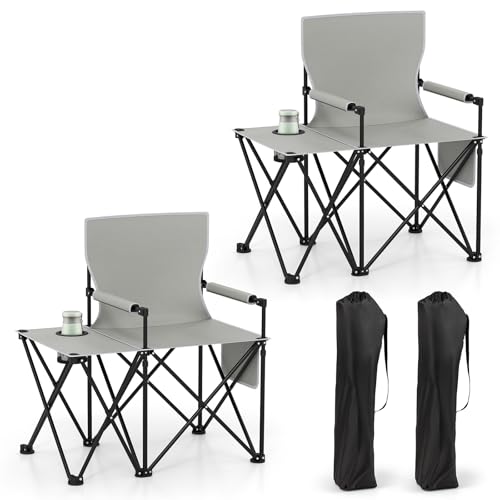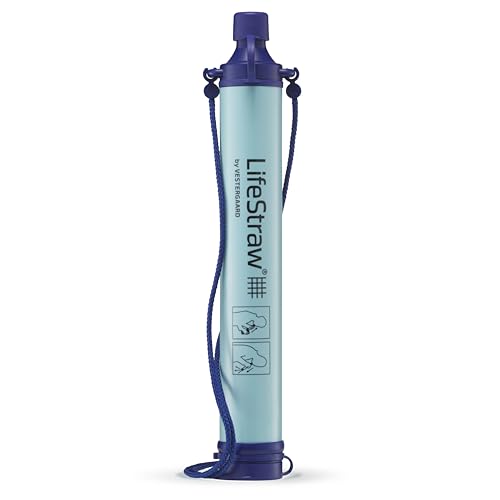There’s nothing quite like the thrill of camping in the great outdoors. The fresh air the rustling leaves and the crackling campfire create an experience that’s hard to beat. But what happens when you wander off the beaten path and find yourself lost? It can be a daunting situation but don’t panic.
In this guide, I’ll share some practical tips and techniques to help you navigate your way back to safety. Whether you’re a seasoned camper or just starting out these strategies will boost your confidence and keep you grounded in the wilderness. Let’s explore how to turn a moment of uncertainty into a lesson in survival.
Understanding the Risks of Getting Lost
Losing your way in the wilderness can lead to dangerous situations. Understanding the potential risks helps mitigate fear and reinforces the importance of staying aware and prepared.
Common Causes of Getting Lost
- Lack of Familiarity: Exploring unfamiliar terrain can quickly cloud your sense of direction. Known trails often blend with trails that seem appealing but don’t lead to safe paths.
- Poor Navigation Skills: Relying solely on technology for navigation can backfire. GPS devices may fail due to battery issues or lack of signal. A map and compass are essential backups for any adventurer.
- Weather Changes: Sudden weather shifts can obscure familiar landmarks. Fog or heavy rain can alter visibility and distort your perspective, making it tricky to maintain your original route.
- Loss of Concentration: Getting distracted by the beauty of nature can lead to losing track of direction. While appreciating the surroundings, I remind myself to stay mentally connected to my route.
- Trail Confusion: Trails can split and merge, leading to uncertainty. In dense forests or rocky areas, marked paths may vanish, complicating navigation even further.
Importance of Preparation
- Researching the Area: Understanding the terrain and potential hazards before setting off is vital. Familiarizing myself with maps and trail reports ensures I know what to expect.
- Packing Navigation Tools: Carrying a compass, detailed maps, and a portable charger for my GPS provides multiple navigation options. These tools become lifesavers in uncertain situations.
- Planning Your Route: Always choosing a clear, defined route and sharing it with someone else prevents isolation. If I get lost, my friends or family can alert authorities.
- Practicing Navigation Skills: Regularly practicing using a compass and map builds confidence. I often take short trips to reinforce my skills, ensuring I’m equipped to handle unexpected situations.
- Remaining Mindful: Staying aware of my surroundings improves my chances of maintaining direction. Noticing natural landmarks enables me to retrace my steps if necessary.
Understanding these risks and preparing effectively allows me to enjoy camping adventures while minimizing the chances of getting lost.
Essential Gear for Navigation
Having the right gear for navigation makes a significant difference when camping. It not only helps prevent disorientation but also boosts confidence in the wilderness. Here’s a breakdown of essential equipment.
Navigation Tools to Carry
- Map: Always pack a detailed topographic map of the area. It provides vital information on terrain, elevation, and landmarks.
- Compass: A reliable compass is essential for orienting the map and navigating. Practice using it before your trip to avoid confusion.
- GPS Device: A handheld GPS device offers precise location data. Though batteries can run out, it’s a valuable tool for initial navigation.
- Smartphone App: Use offline map apps designed for outdoor use. Many can track your route as long as you save maps before heading out.
- Flashlight or Lantern: A flashlight helps in low visibility situations. Look for models with a red light setting to preserve night vision.
Clothing and Safety Equipment
- Brightly Colored Clothing: Wear clothes in bright colors to be more visible, especially in case of emergency. It aids in search efforts.
- Weather-Appropriate Clothing: Layer your clothing to adapt to changing weather conditions. Invest in waterproof and breathable fabrics.
- First Aid Kit: Include bandages, antiseptics, and other essentials. Carry it in an accessible pack to address injuries promptly.
- Whistle: A whistle serves as an effective signaling device. It’s louder than a voice and can help rescuers locate you more easily.
- Emergency Blanket: This lightweight blanket provides warmth and shelter in unexpected situations. It’s a compact addition to any gear.
Being well-prepared with the right tools and clothing enhances safety while camping and navigating through the wilderness.
Techniques for Finding Your Way
When I find myself lost while camping, I rely on proven techniques to get back on track. Two of the most effective methods involve using a map and compass and following natural landmarks.
Using a Map and Compass
Using a detailed topographic map and a reliable compass is essential for navigation. A topographic map provides information about the terrain, including elevations and water bodies. I take the time to familiarize myself with the map’s features before heading out. When I find myself disoriented, I:
- Align the compass with the map, ensuring the needle points to magnetic north.
- Identify my current location using recognizable landmarks.
- Measure the bearing to my intended destination, keeping track of my direction as I move.
Practicing these skills before my trips ensures I’m confident in my abilities when I need to navigate without a GPS.
Following Natural Landmarks
Natural landmarks serve as reliable navigation aids in the wilderness. When lost, I often look for distinctive features such as peaks, water sources, or unique rock formations. To effectively use natural landmarks, I:
- Observe the landscape, noting the position of the sun, which rises in the east and sets in the west. This helps orient myself during the day.
- Use rivers and streams as guides since they often lead to larger bodies of water or established trails.
- Pay attention to the growth patterns of trees and vegetation, which can indicate elevation changes or proximity to water.
By employing these techniques, I find my way back to safety while enjoying the beauty of the outdoors.
Emergency Strategies
Getting lost while camping can be daunting, but having a few emergency strategies in mind calms the nerves. Here are some vital steps to take if you find yourself disoriented.
Signaling for Help
Signal for help when lost. Use a whistle as it carries over long distances and requires little effort. Three short blasts is an international distress signal. I also recommend using a mirror or reflective surface to catch the sun’s rays, directing the light towards potential rescuers. If you’re near a trail or campsite, try creating a large SOS signal using rocks, sticks, or other debris. Making noise is crucial; shouting and clapping can attract attention if anyone’s nearby.
Creating a Shelter
Creating a shelter becomes necessary if you must spend the night away from your campsite. Find natural resources like fallen branches, leaves, and grass to protect yourself from the elements. Construct a lean-to by leaning long branches against a sturdy tree. Cover the structure with foliage for insulation. Look for a dry area, away from potential hazards like falling branches or flooding. An improvised shelter offers warmth and keeps you dry, aiding in your comfort until help arrives or you can navigate safely back.
Conclusion
Getting lost while camping can be a daunting experience but it doesn’t have to ruin your adventure. With the right preparation and skills you can navigate your way back to safety with confidence.
Remember to trust your instincts and stay calm. The wilderness is full of wonders waiting to be discovered and knowing how to find your way enhances that experience.
I hope this guide empowers you to embrace the great outdoors while feeling secure in your ability to handle unexpected situations. Happy camping and may your journeys always lead you back to the campfire!











